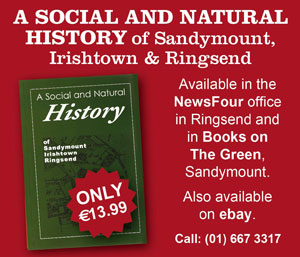
Images provided by National Gallery of ireland.
Masterpieces of a lauded Dutch painter are currently on exhibition within walking distance of Dublin 4.
Vermeer And The Masters Of Genre Painting: Inspiration and Rivalry is currently being held in the National Gallery of Ireland, Merrion Square West. It showcases many paintings of Johannes Vermeer as well as many of his contemporaries such as Gerard ter Borch, Frans van Mieris and Gabriel Metsu.
As was common during the Renaissance, the paintings depict various family scenes, particularly around ‘private moments’ of young maidens. The exhibition is very much designed to tell the story of the culture of Dutch painting at the time and its impassioned, though fierce, competition, hence the subheading: Inspiration And Rivalry.
Johannes Vermeer was born in the city of Delft in the Netherlands, where he spent most of his life. It is unknown under whom Vermeer studied, though it is speculated to have been Leonard Bramer, a master painter of the day, also from Delft.
Vermeer initially painted allegorical works of a religious nature, such as Diana and Her Nymphs (c. 1653–54). However, in line with growing trends in Dutch art, Vermeer turned toward depicting domestic scenes. Art on the theme of the home was particularly popular in Delft.
According to the exhibition, Vermeer’s paintings were frequently ‘in reply’ to earlier works by other Dutch paintings. For example, Vermeer’s Woman With A Pearl Necklace (c. 1662-1665) is based on Frans Van Mieris’ Woman Before A Mirror (1662), itself based on Gerard ter Borch’s Young Woman At Her Toilet With A Maid (c. 1650-1651) illustrating the complex relationships and interconnectivity of Dutch art during the 17th C.
Specifically, Ter Borch’s decision to depict “full-length figures in an elegant domestic interior played a pioneering role in the popularisation of ‘high-life’ genre scenes”, scenes of upper-class domestic figures in their homes, according to the NGI’s pamphlet for the Exhibit.
Vermeer frequently took a painting of one of his contemporaries and made it his own. With Woman With A Pearl Necklace, Vermeer made the painting his own through his use of artificial light. In general, light was an important device for Vermeer when painting. It allowed him to make his paintings more abstract.
His works offer a meaningful and compelling insight into aristocratic life in Delft and showcase the innovation of Dutch painting in the era. Curiously, Vermeer was not widely known in the Netherlands, though popular in Delft, and died leaving his wife with a considerable debt. It was not until 1866 when the French painter and critic, Étiene-Joseph-Théophile Thoré, published his own views on Vermeer that the Dutch painter was realised as the master he was.
The exhibit will run until September 17th and is well worth attending to see the beauty and delicacy of the Dutch painters, especially the great Vermeer. It is a paid exhibit with tickets ranging from €10, with discounts for students. It is recommended to obtain an audioguide to enjoy the exhibition fully.
By Kevin McSharry



